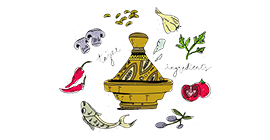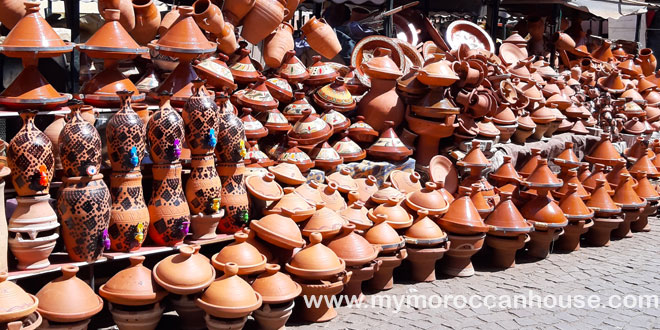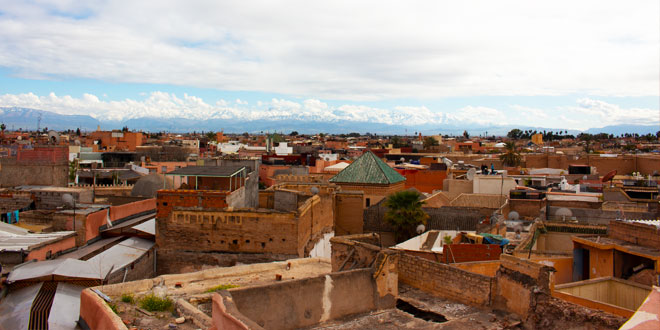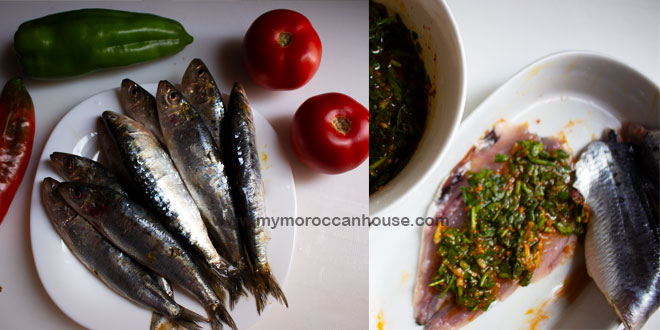You have reached this interesting post as you might be among those who have asked the following questions:Is Morocco too hot in July? Is July a good time to visit Morocco? Is Marrakech too hot in July? Is July a good time to visit Marrakech? What is the hottest month in Morocco? Is Morocco hot all year round? What is the best month to go to Morocco?
As a whole, it is possible in some places to see the mercury rise near 50°C during July. As for the rest of Morocco, the months from July to September will be the hottest with an average maximum temperature exceeding 30°C during the high period of July-August. Temperatures are lowest in December and January, with an average of 10°C and rainfall of 10-15 mm per month.
Is July a Good Time to Visit Morocco?
In fact, July is a very special month to visit Marrakech because, despite the heat, you can enjoy the full program of the Popular Arts Festival or other celebrations like Throne Day.
Also, in July, Agadir enjoys very good sunshine of around 9 hours a day with an estimated number of rainy days for this month of 1. You should be fine.
The average temperatures are between 20°C and 32°C but be aware that depending on the year they can go down to 13°C and go up to 47°C. You absolutely must wear sunscreen.
In July, Chefchaouen enjoys very good sunshine of around 11 hours a day with an estimated number of rainy days for this month of 1. You should be fine and dry!
The average temperatures are between 23°C and 31°C but be aware that depending on the year they can go down to 5°C and go up to 41°C. You absolutely must wear sunscreen.
Is Marrakech Too Hot in July? Is July a Good Time to Visit Marrakech?
Throughout the summer, as in almost all of Morocco, temperatures in Marrakech are very high. On average, from June to September, the temperature is close to 35 degrees in this region of the center of the country. During afternoon heat peaks, the temperature can even regularly exceed 45 degrees.
If you choose to go to Marrakech during the summer, the morning and the evening will be the only times when you can really enjoy your stay.
During the afternoons, the excessive heat will rather be an invitation to find a cool place to take a nap. You can easily find something to occupy your evenings in Marrakech, but summer will often be a season to avoid, especially if you are traveling with your children. Besides being the hottest month of the year, July is also a very busy time.
The month of July is a month that not everyone recommends for a trip to Marrakech because the temperatures are very high , reaching an average of 40ºC. Despite this, a number of festivities and events make it a very special time for your trip, such as the Folk Arts Festival , which fills the city with folklores and performances for more than ten days, or the Throne Festival , which is celebrated in style to commemorate the coronation of Mohammed VI.
What Is the Hottest Month in Morocco? Is Morocco Hot All Year Round?
Morocco’s climate is Mediterranean, oceanic and continental. So:
- Prefer the months of May, June, September and October , the temperatures are pleasant.
- The months of July and August can be very hot, especially in Marrakech.
- Less recommended, the cooler winter season.
The months of the year that record the highest maximum temperatures are: August (with 32°C), July (with 31°C), September (with 29°C),
Here is a list of some valuable statistical information on the weather in Morocco to help you in your choice of the best time to favor for your trip:
- In Morocco, the weather is good everywhere in April, May, June, July, August, September and October
- The climate is favorable all year round to visit Rabat
- On average, the hottest months in Rabat are July, August and September, and the coldest months are January and February
- The rainiest months in this city are January and November.
- The cities with the best climate are Marrakech, Agadir, Casablanca, Dakhla, El Jadida, Essaouira, Nador, Rabat, Saidia, Tangier and Bouznika with good weather at least 11 months a year
- The sea temperature is suitable for swimming all year round in Agadir.
What Is the Best Month to Go to Morocco?
Morocco is a land of wonders: palaces worthy of the tales of the Arabian Nights, lush gardens, lively souks with intoxicating scents of spices, streets in constant effervescence or even breathtaking beaches, it is a country that charms the senses.
Travelers benefit from a wide choice of activities, whether cultural, entertaining or sporting, there is something for everyone. A stay in Morocco will also be an opportunity to discover the delicious local gastronomy and to relax on a beach or in an authentic hammam.
The weather in Morocco is generally pleasant throughout the year, although the south experiences a more arid climate. Summer, although very sunny, sometimes turns out to be very hot, especially when the sirocco blows, a very hot wind that brings with it dust coming straight from the Sahara desert.
To take full advantage of a stay in Morocco, it is advisable to leave in spring and autumn, and more particularly in the months of April, May and October. You will thus avoid periods of rain or too stifling heat.
What Is so Special About Morocco? Reasons Why You Should Visit Morocco
Morocco is a land of glamorous and vivid contrasts. The gateway to two continents, it is a country of breathtaking landscapes, rich in history and heady with magnific scents and spectacular sights.
While the countryside is home to old traditions and diverse peoples, the ever-growing urban centers boast incredible new architecture together with the old, and activities to suit all modern tastes.
Morocco’s diverse geography, multicultural atmosphere, and rich history make it a mesmerizing country.
Its towns offer a striking contrast of ancient kasbahs, mosques and souks and modern architecture, with a
mix of Berber, Arab and African peoples.
In the crowded ancient medinas, young men in designer jeans haggle over cell phones alongside traditionally dressed women shopping for housewares.
In the fertile countryside, a farmer riding on a goat is as common a sight as a television satellite perched on a mud-brick roof.
Moroccan culture is extremely rich and difficult to pigeonhole. Moroccan landscape includes beaches, mountains, lakes, forests, and deserts.
Morocco is a unique blend of Arab, African, and European ways of life, and the Moroccans wouldn’t have it any other way.
Moroccan cuisine is rich and varied, owing to a variety of cultural influences. Meat is well-spiced and lean, vegetables are fresh and abundant, and everything is permeated with spices.
Moroccan cooking is quite labor-intensive and dishes are pleasingly presented as well as meticulously prepared.
Beef, lamb, fish, and chicken are all popular and used in a variety of dishes. Pigeon and turkey are also available, and the seafood in the coastal cities is not to be missed.
Meat is prepared according to Islamic halal regulations.
Rice, semolina wheat, and barley grains are used for a variety of dishes. A wide range of spices is used, including cumin, saffron, paprika, ginger, cinnamon, red and black pepper, and a special mixture called ras al-hanout is widely used in Moroccan cuisine.
A typical Moroccan meal starts with something fresh or cooked salads, olives and pickled vegetables and bread, and sometimes a cold beverage. The main course is then brought out, usually in a large pot, or tajine.
Moroccans will either eat from the main dish with their hands or using spoons, or serve food on to individual dishes.
After the main course is through and plates are removed, various fruits are arranged on the table, and mint tea is served, sometimes with Moroccan cookies.



